Arsenal Women returned to winning ways with a 4-2 win over West Ham Women. In their first FAWSL game in a month, the win was imperative to stay top of the league.
Despite losing to Manchester City Women in the last round, City did Arsenal a favour this weekend. A draw at Bristol City Women means Arsenal stay top of the league with two points and a game in hand over Man City.
However, this game wasn’t the smoothest for Joe Montemurro’s side. West Ham opened the scoring and went into half-time 2-2. Thankfully for Arsenal, in form Danielle van de Donk scored a brace to secure the win.
But how did West Ham trouble Arsenal? How did Arsenal overcome those troubles? I’ll go through that in this tactical analysis.
Arsenal Women’s defence
Arsenal went into this game with a somewhat unfamiliar defence. Although Lisa Evans and Leah Williamson have been regulars in defence, that wasn’t the case for the rest of the backline.
Janni Arnth came in for her debut with Katie McCabe to the left of her. This saw the left side of Arsenal’s defence targeted by West Ham. However, with Arsenal dominating 60% of possession, West Ham had to pick their moments.
With this in mind though, when they went forward West Ham were effective. This was showcased as both West Ham goals originated from Arsenal’s left-hand side. A big reason why they were successful in this was their directness, which caught Arsenal out.
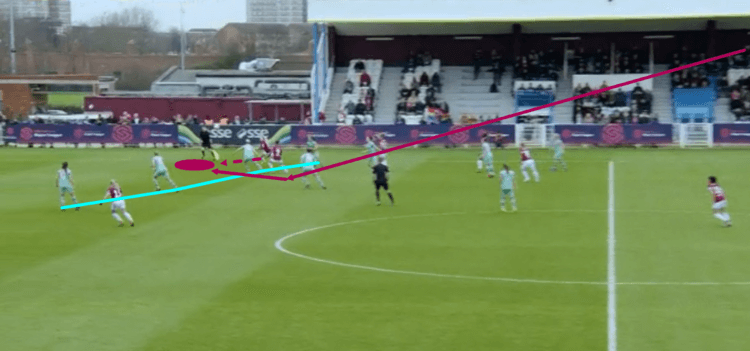
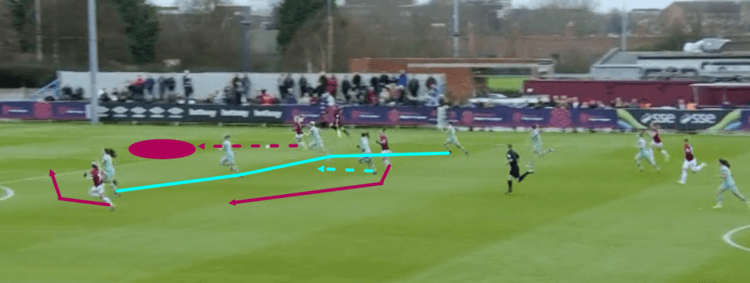
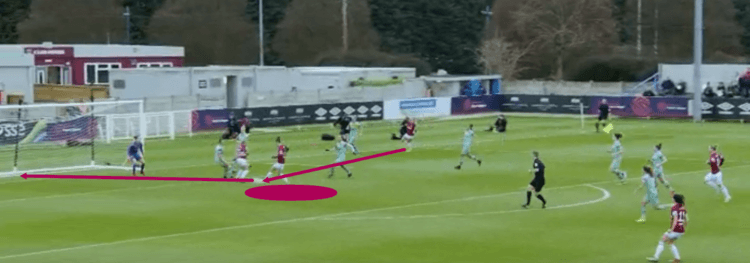
Even though the initial goal kick should have been dealt with, this showed some problems Arsenal are having. With injuries hitting hard this season, players haven’t always been able to play in their natural positions. This, along with new defensive partners, means they may take a bit longer to get used to each other’s play as well as what is demanded of them.
This was seen again when Arsenal were similarly caught out for Ross’ second goal.
West Ham Women’s plan out of possession
As mentioned before, Arsenal Women have been struggling with injuries this season. However, one positive going into this game was that Kim Little was available to play again. Like Jordan Nobbs, who is currently injured, she offers a great deal going forward from midfield.
Arsenal set up with two sitting midfielders however in Lia Walti and Dominique Bloodworth, rather than the usual one. Although they’re both good at what they do, this slightly hindered Arsenal going forward.
This season, Arsenal have been at their best with central attacking midfielders running beyond the ball to aid attacks. This has mostly been through Nobbs, Little and Van de Donk. However, with the set-up slightly different with Van de Donk out wide, we didn’t quite see this.
What made this more difficult was West Ham’s strategy off the ball. Early on, they opted to press high up the pitch. This made life incredibly hard for Arsenal as they couldn’t transition up the pitch as they’d usually like to.
That high press was from the off.
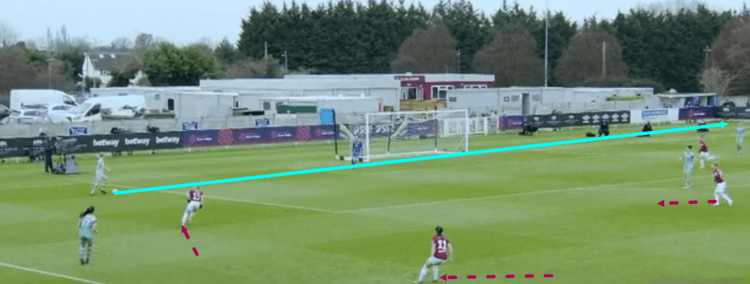
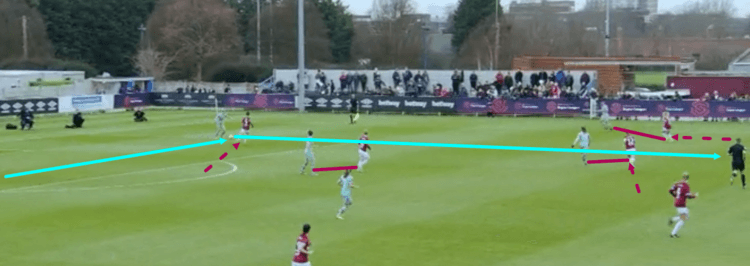
This plan was very effective as it helped West Ham stop Arsenal from creating a rhythm. However, this approach changed as the game went on. Rather than continuously pressing high, West Ham opted to drop deep. This would leave less space for Miedema to attack in behind, as seen below.
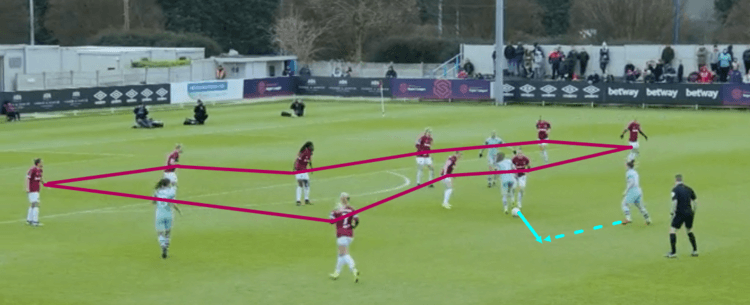
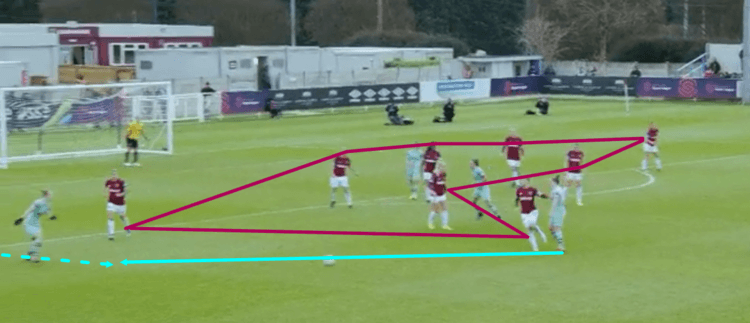
Ultimately, this game plan did what it was meant to do. It stopped Arsenal from playing intricate passes to cut through the West Ham defence. However, in doing this, West Ham were dealing with one problem and creating another.
Arsenal Women’s solution
Previously this season, Arsenal have shown that they can adapt in games. Mostly, that has been when they have come up against sides who play deep blocks. In these games, sides tend to stack bodies centrally, leaving the wide areas open.
This was the case against West Ham, as most of Arsenal’s joy came from the flanks. In fact, all four of Arsenal’s goals came from crosses. However, a big help in exploiting those wide areas was rotation.
This season, Arsenal’s attack has been very fluid. Apart from Miedema, who tends to stay central, those alongside her are given licence to roam. Beth Mead has benefitted from this as she is developing into a very efficient winger, although her natural position is at striker. Yesterday, we saw how her wide game has developed as she claimed three assists from crosses, as we can see below.
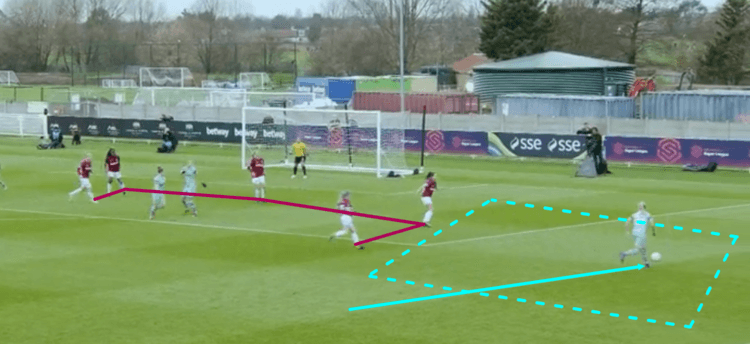
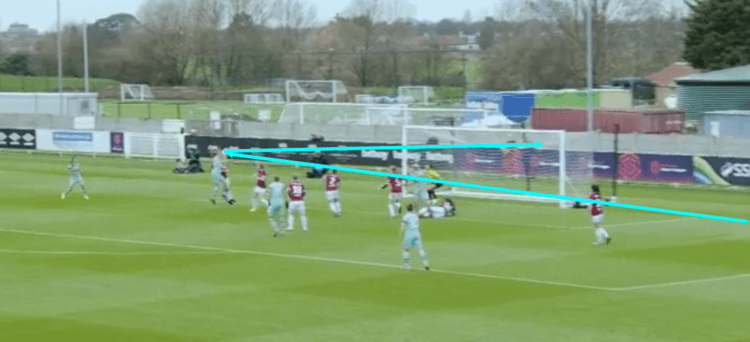
Arsenal enjoyed the massive advantage of the height difference between the two sides. Leaving their centre-backs up even if the initial corner wasn’t successful ended up paying dividends.
In the second half, Van de Donk also headed a Mead cross home. This came after her first goal of the game which resulted from Arsenal overloading the left wing.
Summary
Arsenal faced difficulties at Rush Green, but as expected they found solutions. Going into the second half of the season, it’ll be vital that they continue to find ways to win. Teams will continue to try and shut them down, but if they are able to mix up their play, as they did yesterday, they can continue to be very dangerous in 2019.
However, going forward, it would be nice to see Kim Little and Danielle van de Donk both used centrally. This game saw Miedema very isolated, so bursts forward from either midfielder would’ve helped her greatly.
If you love tactical analysis, then you’ll love the digital magazines from totalfootballanalysis.com – a guaranteed 100+ pages of pure tactical analysis covering topics from the Premier League, Serie A, La Liga, Bundesliga and many, many more. Get your copy of the FIRST of two December issues for just ₤4.99 here, or the SECOND of the December issues with an annual membership right here.

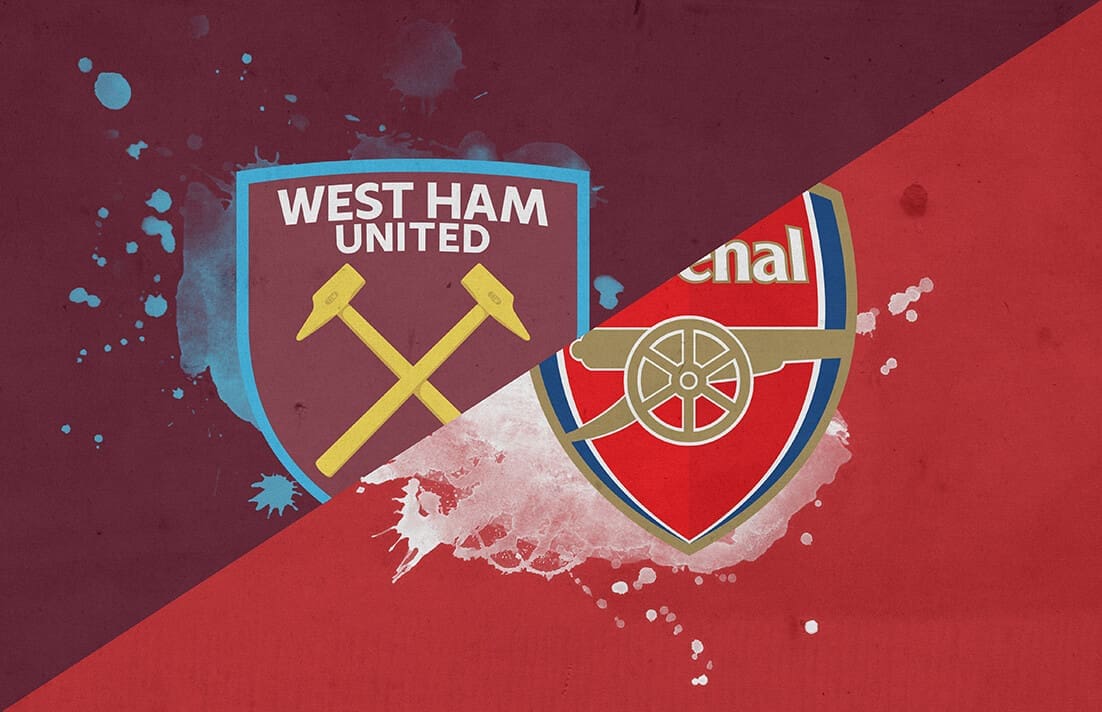


Comments